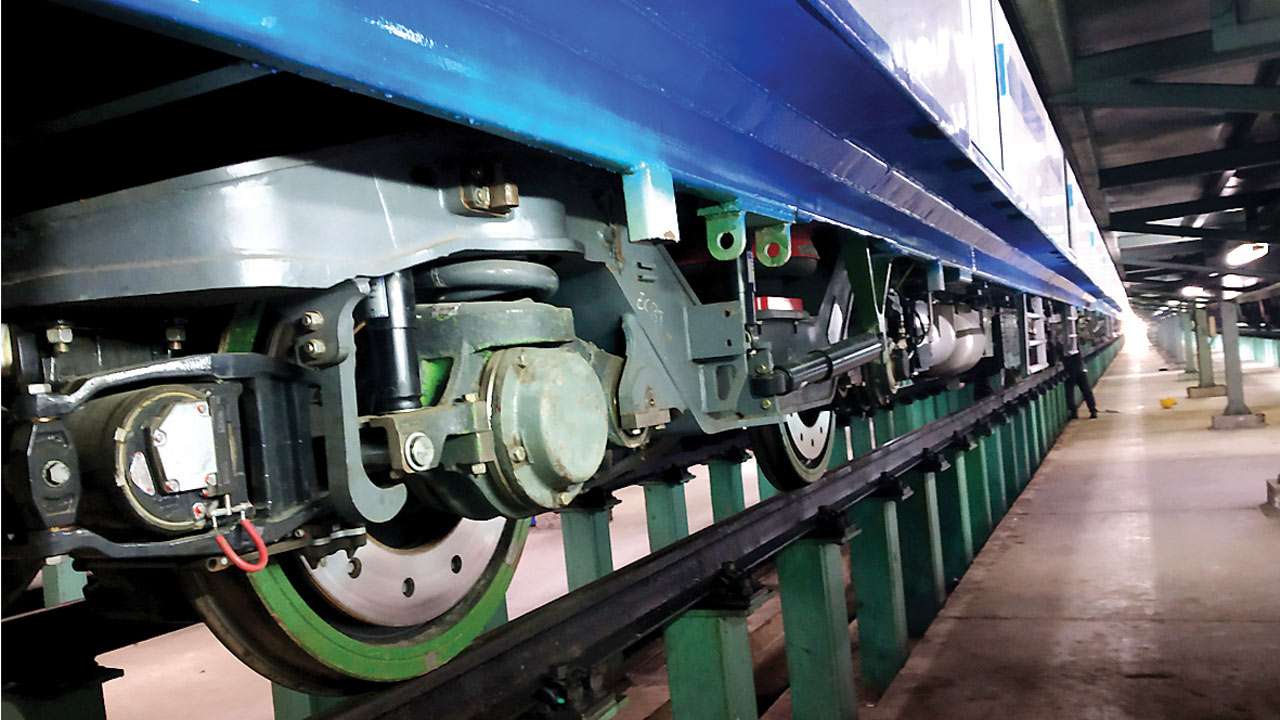
The new, more commodious air-conditioned local the suburban railways procured last month may get jammed during monsoon, as its underslung electronic gear will likely be exposed to waterlogged tracks, bringing it to a halt, railway officials said.
The matter has come to light a day before a Railway Board member in-charge of trains across the country is due to inspect AC locals here.
All trains but this new kind, a prototype with surveillance cameras at its front, can wade through tracks not extremely waterlogged. This has mostly to do with the distance between the rail line and the exposed underslung equipment, which is barely 400 mm, or 40 cm, in case of the new local. It should have been 36 cm more, sources say.
While a 40-cm gap is normal for a local whose circuitry for drawing power from overhead cables is inside the coach, it is not for rakes whose circuitry is slung outside the coach.
Sources say that as per specifications for procuring AC rakes with underslung gear, the electronic systems should be 760 mm, or 76 cm, from rail level. They also stipulate that traction gear and underslung equipment should be completely waterproof.
They further cite what IP rating the locals must have. An IP rating is a global standard that defines the degrees of protection devices provide against liquid, dust and solid objects. It is also used for cellphones.
The specifications say the local's traction converter — responsible for powering the train and ensuring minimum power fluctuations — can remain underslung with IP-68 protection up to a height of 650 mm.
"But in this prototype of underslung AC train, this gap is 400 mm or so, which is less than desired," said a senior railway official on the condition of anonymity.
It is routine for water levels to cross the danger mark on tracks which is indicated by water gauges next to the rail. Senior officials said the train is permitted to run at speeds up to 8 kmph if water levels touch 200mm.
Some officials feel the concerns are overblown, and resist the new system which will introduced. "Of 365 days, there will barely be 4-5 days of heavy waterlogging. We cannot stop a new system for that. Trains with underslung equipment is the latest technology, also used in developed countries. What is needed is an overhaul of the city's drainage system, rather than shooting holes in the AC train," said a railway official on the condition of anonymity.
Sixteen such locals have been proposed to be purchased at an overall cost of Rs 70-75 crore.
With longitudinal seats similar to Metro trains, the AC local can carry 8,500 commuters in a 12-car during peak hours. With regular seating arrangements, they can carry 10 per cent more than the regular local, which carries 6,200 commuters — an overcrowding called the super-dense crush load. At present, the average number of people using the AC local daily is 1,500 commuters.